Every time I return from one of my trips to Coorg, some kind friend or other hands me a plastic bag full of dried beans, twisted and tied in a knot at the neck, or wrapped up in twists of newspaper. This may not sound like very much, but inside lies a treasure of beautiful, shiny, boat-shaped dried pods, a contour that has earned them the botanical classification Phaseolus vulgaris, referring to sailing boats. Red kidney beans, haricots, cannellini, french beans, pinto and lima beans all crowd together under this umbrella. Terracotta, black, white, polished teak brown, sometimes flecked and streaked like birds’ eggs, the dried beans spill onto the kitchen table with a clatter. They look so pretty in a glass jar, that there’s always a little tussle in my mind whether I really want to cook them or not. But cook them I do, into a beautiful rich, kuru curry, simplicity itself, but so completely satisfying. 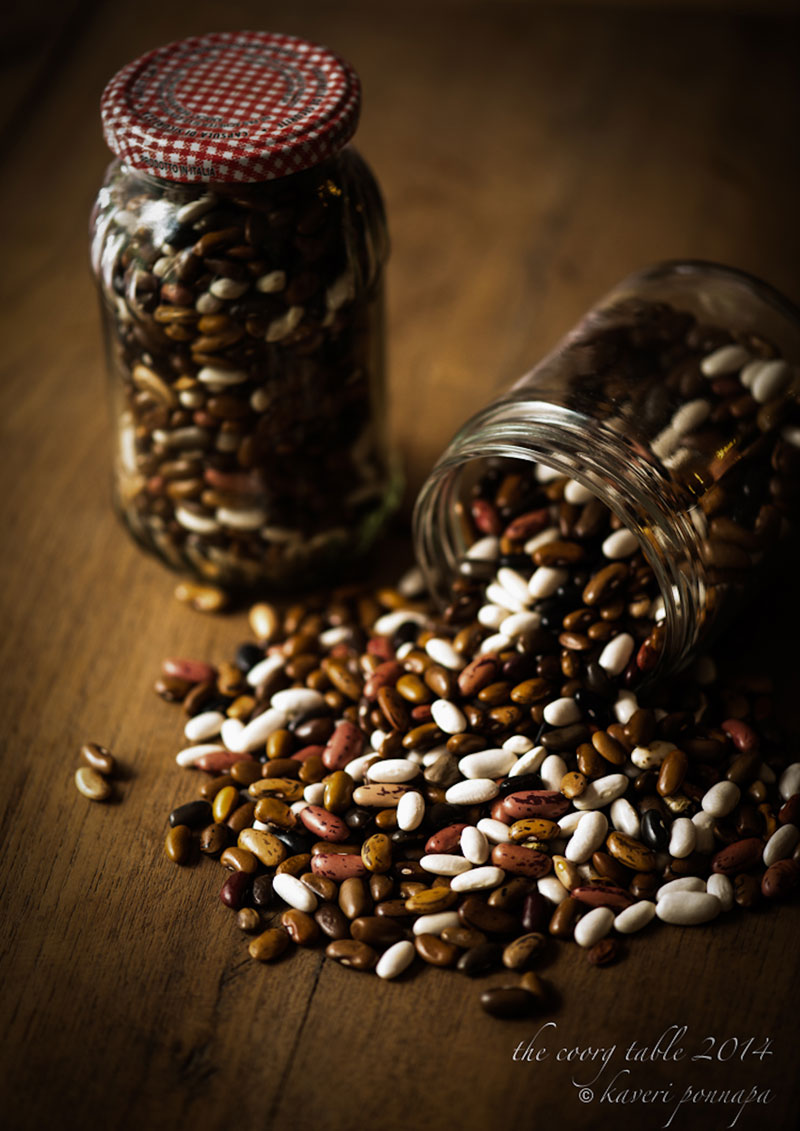 Of course I’m biased, but the soil of Coorg produces the most delicious beans I have ever eaten. They also cook more tender than any store bought ones. Traditionally, they are planted when the paddy transplanting season draws to a close and, by the end of the year, as the much awaited rice harvest approaches, the beans are also ready for the table, to be cooked into a ‘harvest curry’ – putari chette curry. In season, they arrive in such profusion that everyone is hard pressed to keep up with plucking and drying them, calling in all hands to help out. That’s when you can have the best Coorg kuru curry, made of fresh beans in their prime, mixed with bright green chette, the tender shells. The surplus is spread out to dry in the sun. Sheets and sheets lie in yards outside kitchens, to be dried, shelled and stashed away for the rest of the year. And then one day, a stroll through the vegetable patch shows dry, empty, twisted shells, and you realize with a twinge of sadness that the exuberance has come to an end. But the generosity of one season has already been preserved for others that follow, and the dried beans can be relied on in the months that lie ahead, particularly the monsoons. Beans are grown through the year but, according to local kitchen wisdom, only the ones that peak towards the end of the year have the potential for drying, later beans tend to get mouldy and rot.
Of course I’m biased, but the soil of Coorg produces the most delicious beans I have ever eaten. They also cook more tender than any store bought ones. Traditionally, they are planted when the paddy transplanting season draws to a close and, by the end of the year, as the much awaited rice harvest approaches, the beans are also ready for the table, to be cooked into a ‘harvest curry’ – putari chette curry. In season, they arrive in such profusion that everyone is hard pressed to keep up with plucking and drying them, calling in all hands to help out. That’s when you can have the best Coorg kuru curry, made of fresh beans in their prime, mixed with bright green chette, the tender shells. The surplus is spread out to dry in the sun. Sheets and sheets lie in yards outside kitchens, to be dried, shelled and stashed away for the rest of the year. And then one day, a stroll through the vegetable patch shows dry, empty, twisted shells, and you realize with a twinge of sadness that the exuberance has come to an end. But the generosity of one season has already been preserved for others that follow, and the dried beans can be relied on in the months that lie ahead, particularly the monsoons. Beans are grown through the year but, according to local kitchen wisdom, only the ones that peak towards the end of the year have the potential for drying, later beans tend to get mouldy and rot.  The weather is cool and rainy now, with fresh winds blowing, and the leaves of all the trees and plants washed clean, no mean feat in our dust-drenched city. It seems like the perfect reason for a small celebration, and I’ve decided to dig into my hoard of dried beans from Coorg. A cupful of dried beans, rinsed and soaked overnight, swells and rehydrates by the morning. They need a change of water, a quick additional rinse, and 20 minutes in a pressure cooker with a few spices. If you have the patience and the time, boiling the curry in a cast iron khadai will give you wonderful results. Even if you don’t, it’s worth taking the beans out of the pressure cooker when they are three-quarters done and watching them bob and bounce energetically in a khadai. This way, you can test for doneness and make sure that they are tender, but not overcooked. And you can judge exactly when you need to drop in the fresh, green shells.
The weather is cool and rainy now, with fresh winds blowing, and the leaves of all the trees and plants washed clean, no mean feat in our dust-drenched city. It seems like the perfect reason for a small celebration, and I’ve decided to dig into my hoard of dried beans from Coorg. A cupful of dried beans, rinsed and soaked overnight, swells and rehydrates by the morning. They need a change of water, a quick additional rinse, and 20 minutes in a pressure cooker with a few spices. If you have the patience and the time, boiling the curry in a cast iron khadai will give you wonderful results. Even if you don’t, it’s worth taking the beans out of the pressure cooker when they are three-quarters done and watching them bob and bounce energetically in a khadai. This way, you can test for doneness and make sure that they are tender, but not overcooked. And you can judge exactly when you need to drop in the fresh, green shells.  Kuru curry has a lovely heft to it; the beans plump out, and absorb the flavours of the tamarind, mild chillies, and an edge of toasty jeera that goes into the dish. There’s something timeless about this curry, something reliable, generous and reassuring. It is one of those rustic dishes that feel as though they have been on tables season after season, ever since cooking began. It always makes me think of the cozy dining room in my husband’s family home, with rain threatening outside, and a steaming hot dish of kuru curry on the table. I’ll leave you here with a helping of steamed white rice, or a couple of akki ottis. You can choose any one as an accompaniment and then, you can mush up the soft, juicy beans with your fingers into your rice or akki ottis – please be sure not to use cutlery, kuru curry does not care for spoons and forks.
Kuru curry has a lovely heft to it; the beans plump out, and absorb the flavours of the tamarind, mild chillies, and an edge of toasty jeera that goes into the dish. There’s something timeless about this curry, something reliable, generous and reassuring. It is one of those rustic dishes that feel as though they have been on tables season after season, ever since cooking began. It always makes me think of the cozy dining room in my husband’s family home, with rain threatening outside, and a steaming hot dish of kuru curry on the table. I’ll leave you here with a helping of steamed white rice, or a couple of akki ottis. You can choose any one as an accompaniment and then, you can mush up the soft, juicy beans with your fingers into your rice or akki ottis – please be sure not to use cutlery, kuru curry does not care for spoons and forks. 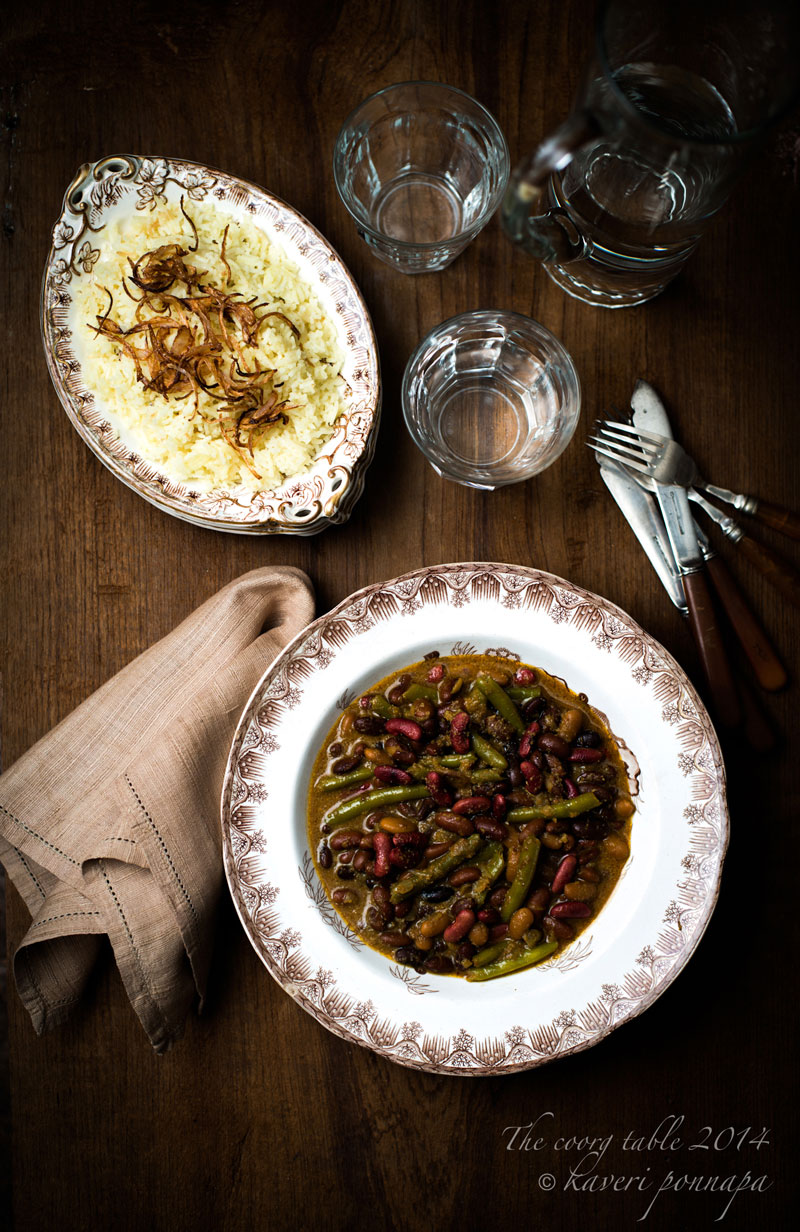
Thank you for visiting this page. If you read something that you enjoy, or see an image that you like, please take a moment to write a response. Do look out for the recipes of all the food featured here in my upcoming cookbook.
Image Credits: Nithin Sagi
All Food Styling: Kaveri Ponnapa

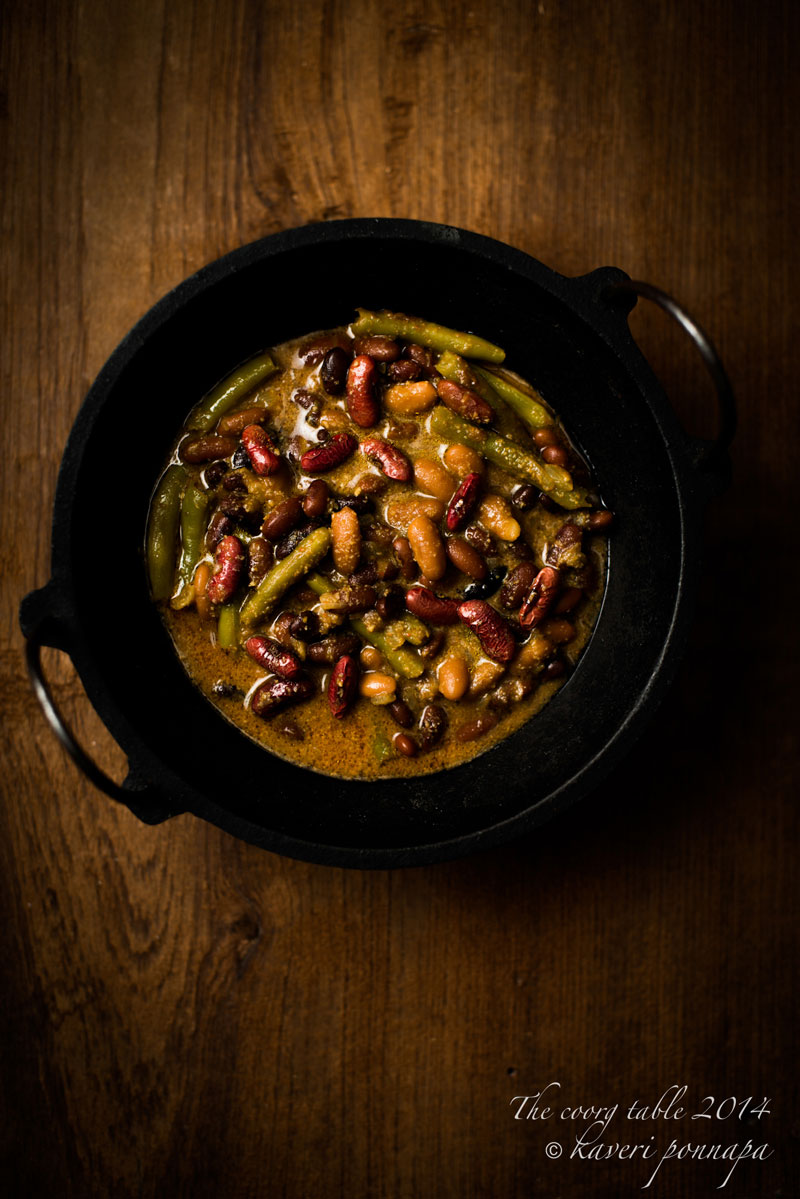
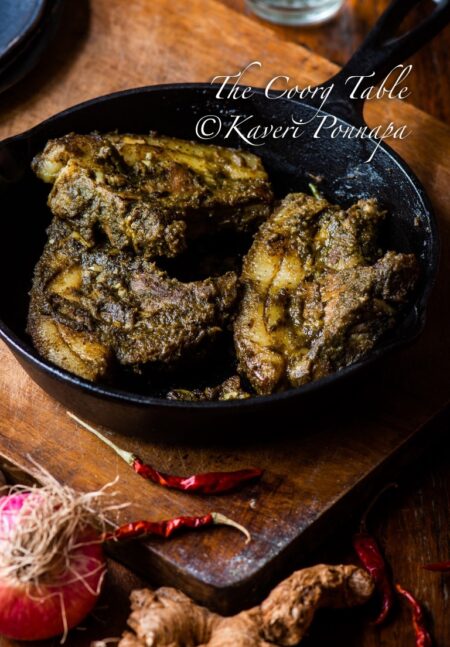

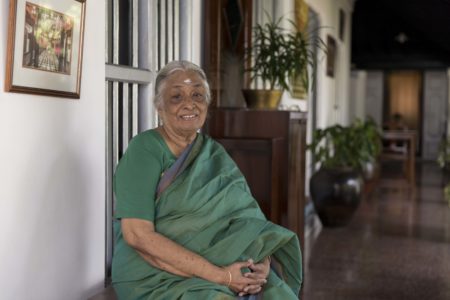
Discovered your blog today and I am so glad I did. Such beautiful pictures and soulful recipes. I am going to try this recipe with a mix of hill beans that I bring from Kumaon region. Thanks for sharing.
Hi Sangeeta, welcome to The Coorg Table, and thank you for your kind words. This is a simple, but very satisfying curry, do let me know how it turned out. Hill eans from Kumaon sound delicious – like the beans from Coorg, I’m sure.I hope you enjoy this, and also reading about and trying out other food that I have written about here. All good wishes.Kaveri.
Sounds delicious and looks heavenly. Why would you use pressure cooker ? In my understanding, slow cooking on low fire reveals the goodness that pressure cooking can not :-). In any case , I am going to try this but without the cooker.
It’s so good to hear that you plan to slow cook the beans, Ajay, it’s definitely worth it. People generally seem short of time these days, and the pressure cooker gets used more often than it should. Sometimes I like to suggest cooking one dish less, but slow-cooking whatever you are making. The difference in taste, as you say, is worth the effort. I hope you enjoy this rustic Coorg curry we love.Let me know how it turned out. Best wishes, Kaveri